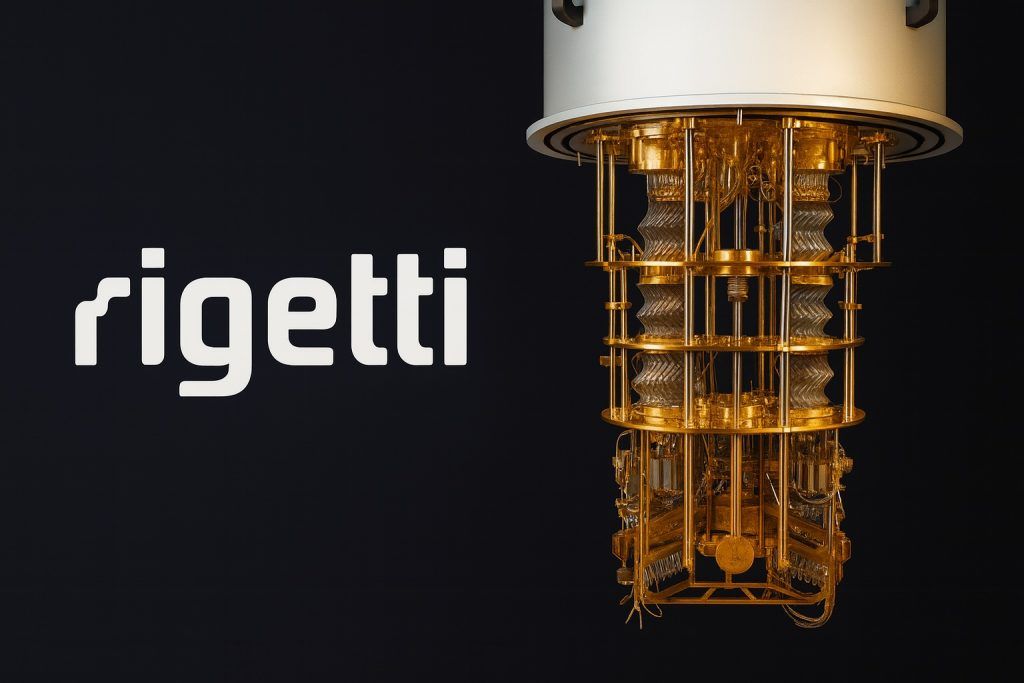Toronto, Ontario – October 16, 2025: Denison Mines Corp. (NYSE American: DNN) is riding a wave of uranium market optimism, with its stock surging to multi-year highs this week. The Canadian uranium developer’s shares have spiked amid soaring uranium prices and a string of positive company milestones. Investors are abuzz over Denison’s progress on key projects and what it means for the future of nuclear energy. Below are the key takeaways from the latest developments:
- DNN Stock Hits 52-Week High: Denison Mines’ stock reached a new 52-week peak of $3.14 per share during trading this week, closing around $3.05 on heavy volume of over 14 million shares [1]. The rally continued into mid-week, with shares last trading near $3.17 – more than double their level at the start of 2025 – before a slight pullback [2] [3].
- Analysts Grow Bullish: Multiple analysts have upgraded DNN in recent months. Five analysts now rate Denison a “Buy,” giving the stock a consensus “Buy” rating and an average price target of about $2.75 [4]. (Notably, DNN’s market price has already surpassed that target after its latest surge.) Institutional investors have also taken notice – roughly 36.7% of Denison’s shares are now held by institutions, signaling “growing interest from hedge funds and financial institutions” [5] in the company.
- Uranium Prices at 10+ Year Highs: The uranium spot price has skyrocketed above $83 per pound in early October 2025, its highest in over a decade [6]. A structural supply shortfall – estimated at a 50 million-pound annual deficit – and resurgent nuclear power demand have fueled this price boom [7]. Industry forecasts project further upside, with some analysts expecting $90–$100+ per pound by late 2025 [8]. This uranium “contracting crisis” has turned uranium miners like Denison into market darlings.
- Key Project Milestones: Denison has achieved major milestones in recent months. The company returned to uranium production for the first time since 2008 via a joint venture at the McClean Lake project, using an innovative SABRE mining system [9]. Its flagship Wheeler River uranium project in Saskatchewan cleared a crucial provincial environmental approval, bringing it to the brink of construction [10]. Denison also voluntarily filed a new economic study for its Midwest uranium deposit, highlighting potential to be one of the world’s lowest-cost uranium mines (with all-in costs projected around $11.69/lb U₃O₈ and an 80%+ internal rate of return) [11] [12].
- Uranium Sector Momentum: Denison’s surge mirrors a broader uranium stock rally. Peers like Cameco (NYSE: CCJ) – one of the world’s largest producers – have also hit multi-year highs as utilities scramble to secure long-term supply [13]. Junior developers and miners such as Energy Fuels (NYSE: UUUU) and Uranium Energy Corp. (NYSE: UEC) are likewise “experiencing renewed investor interest and improved prospects” with previously uneconomic projects now viable at higher uranium prices [14]. This sector-wide upswing is underpinned by what many are calling a “nuclear renaissance,” as nations prioritize carbon-free nuclear power to meet climate goals and energy security needs.
DNN Stock Rockets on Uranium Optimism
Denison Mines’ U.S.-listed shares have been on a tear in October. The stock is up roughly 15% in the past two weeks alone [15], part of a steady climb fueled by bullish uranium sentiment and company-specific news. On Monday, October 13, DNN spiked to an intraday high of $3.14 and finished at $3.05 – marking a new one-year closing high [16]. The rally carried into mid-week: on Wednesday the stock oscillated wildly (from lows near $3.05 to highs of $3.35 intraday) before settling around $3.17 [17]. Such nearly 10% intraday swings underscore the volatility in uranium equities as investors react to fast-changing market dynamics.
Year-to-date, Denison’s stock has more than doubled, vastly outperforming broader market indices. The surge in uranium prices is a core driver. After years in the doldrums, uranium has emerged as one of 2025’s best-performing commodities. Spot prices jumped above $83/lb in early October [18] amid a widening gap between reactor demand and mined supply. This price level – the highest since 2011 – has energized uranium mining stocks across the board.
Investors are effectively betting on a uranium supercycle, and Denison has become a proxy for those bullish bets. As a development-stage company with large high-grade resources, Denison offers high leverage to uranium price increases. Each uptick in the long-term contract price improves the economics of Denison’s undeveloped projects, making them more valuable. Indeed, the company noted that higher prices are making formerly marginal deposits economically viable, attracting fresh capital into projects that were previously shelved [19].
Company Catalysts: From Production Restart to Wheeler River Approval
Beyond macro trends, Denison’s own achievements have helped propel the stock. “This summer has been highly productive for Denison. We’ve achieved key milestones at McClean Lake and Wheeler River and delivered results on multiple projects that showcase the potential to add value within our portfolio,” said Denison President and CEO David Cates in a recent update [20]. Those milestones have significantly de-risked the company’s path forward:
- Resumption of Uranium Production: In July, Denison’s McClean Lake joint venture (22.5% owned by Denison, 77.5% by Orano Canada) successfully began mining uranium ore using the patented SABRE technique – a novel Surface Access Borehole mining method. Approximately 250 tonnes of high-grade ore (>10% U₃O₈) were recovered from the first cavity [21] [22], and processing at the McClean mill yielded the first packaged “yellowcake” uranium concentrate. This marks the JV’s first active mining since 2008, effectively returning Denison to producer status (at a small scale). Cates hailed the SABRE startup as “a significant milestone… as the joint venture returns to active mining operations for the first time since 2008.” [23] While McClean’s output is modest, Denison expects to market its share of production in the coming quarters [24] – generating its first revenue from uranium sales in over a decade.
- Wheeler River Project – Nearing Green Light: Denison’s flagship Wheeler River project in Saskatchewan’s Athabasca Basin (home to the world’s richest uranium ores) moved closer to reality. In mid-2025, the Province of Saskatchewan granted Ministerial Approval of Wheeler’s Environmental Assessment, one of the final regulatory hurdles before construction [25] [26]. Federal licensing is underway: Canada’s nuclear regulator has public hearings scheduled in October and December 2025 to review Wheeler’s federal environmental assessment and issue a construction license [27] [28]. After years of permitting work, Denison is now “in the final months of the process” to obtain all approvals for Wheeler’s Phoenix deposit – a planned In-Situ Recovery (ISR) uranium mine that would be the first of its kind in Canada [29]. The company has already completed roughly 80% of the detailed engineering for Phoenix’s facilities [30]. If, as expected, the remaining permits are received by early 2026, Denison can proceed to a construction decision. Wheeler River is widely regarded as one of the most important undeveloped uranium assets globally, with the potential to produce about 6 million pounds U₃O₈ annually at very low cost [31]. The prospect of Wheeler entering construction – and eventually production – is a major factor underpinning bullish sentiment on DNN stock.
- Midwest Project PEA and Technical Transparency: In October, Denison filed a voluntary Preliminary Economic Assessment (PEA) for its Midwest uranium project, which it co-owns with Orano. Although Midwest is a smaller, non-core project, the study’s results were eye-catching. Using in-situ recovery mining, Midwest could achieve “all-in” production costs among the lowest in the world and generate an after-tax internal rate of return over 80% (for Denison’s 25% stake) at base-case prices [32]. The net present value attributable to Denison would be about $240 million [33] – significant for a junior miner. By publishing this PEA, Denison aimed to showcase additional hidden value in its project portfolio and reinforce its commitment to operational transparency. The company noted the assessment was filed despite Midwest not being considered a “material” property, underscoring that management wants investors to appreciate the optionality of Denison’s pipeline. The move appears to have boosted market confidence. “Early test mining and [the] voluntary technical report on Midwest underscore a push for operational transparency, which might boost market confidence in management’s execution,” observed analysts at Simply Wall St in a recent commentary [34].
- Exploration Success: Denison also reported new high-grade uranium intercepts at Wheeler River’s Gryphon deposit (part of the same project) during a 2025 drill program – the first such program since 2018 [35]. The drilling extended high-grade zones beyond the previously defined resource, hinting at further resource expansion potential. Additionally, Denison entered into a strategic exploration alliance with junior partner Cosa Resources. Under a January 2025 deal, Cosa is earning into several Denison properties (including the Darby project near the prolific Cigar Lake mine) and recently identified multiple “high-priority drill targets” at Darby slated for testing in 2026 [36]. While early-stage, these exploration efforts add longer-term upside to Denison’s story.
Analyst Views: Upside Potential vs. Valuation Concerns
The string of positive developments – and the uranium price upswing – have most industry analysts leaning bullish on Denison Mines. Desjardins, TD Securities, Scotiabank, and others reiterated or upgraded their recommendations on DNN over the summer, as the stock began climbing [37]. According to MarketBeat data, five analysts currently cover Denison with Buy-equivalent ratings, and the average 12-month price target is around $2.75 per share [38] [39]. (For reference, DNN is trading in the low-$3 range now, implying the stock has outrun some near-term targets.) TipRanks reports one recent analyst issued a Buy rating with a C$4.35 target for the Toronto-listed shares [40], roughly equivalent to $3.20 in U.S. dollars. This suggests Wall Street expects Denison’s stock to hold its gains and potentially advance further as milestones are checked off.
Beyond formal targets, market models project significant upside if uranium’s momentum persists. For example, one technical analysis model forecasts DNN could rise ~45% in the next 3 months, projecting a price range of roughly $3.7 to $4.7 per share by early 2026 under bullish-trend conditions [41]. Such speculative forecasts underscore the optimism in some quarters that Denison’s rally may be just beginning, especially if uranium prices continue climbing toward the $100 mark.
However, not everyone is unreservedly bullish at current levels. The recent rapid run-up has also raised questions about valuation. Denison, as a pre-production company (aside from its small JV output), does not yet generate positive earnings – in fact, it carries a net loss and has a negative price-to-earnings (P/E) ratio around -50 [42]. The stock’s price-to-book ratio is over 6 [43], indicating a rich valuation relative to the company’s current assets. “The company’s weak financials, unprofitability, high valuation multiples relative to peers, and limited cash runway still frame the biggest near-term risks,” cautioned Simply Wall St’s analysts, adding that the recent share surge likely prices in a good deal of the positive news so far [44]. In other words, unless uranium prices or project developments continue to positively surprise, some of the easy gains may have already been realized.
Importantly, Denison will eventually need substantial capital to build Wheeler River (estimated initial capex around C$335 million, roughly $250M USD [45]). The company has been proactive on this front – it raised ~$50 million in 2023 and secured a $75 million credit facility earlier – but further financing or partnership deals may be required in 2026 to fund construction. How Dilutive any new equity raise might be, or whether Denison can leverage strategic investors, remains a point of debate. For now, though, the market appears comfortable with Denison’s balance sheet, given the expectation that success at Wheeler and a robust uranium price will allow creative financing options (such as streaming deals, JV sell-downs, or government-backed loans) instead of just issuing stock.
The bottom line from analysts: Denison Mines holds significant long-term value if its projects come to fruition, but investors should be mindful of execution risks. The next 6-12 months will be crucial in proving that the company can navigate final permitting, financing, and the transition to construction. “Future catalysts will likely depend on continued project milestones or changes in uranium market conditions,” the Simply Wall St report noted [46]. In other words, DNN’s fate is tied to both its own progress and the broader uranium cycle – a combination that can yield outsized rewards, but not without volatility.
Uranium Market Tailwinds and Industry Context
Denison’s story is unfolding against the backdrop of a resurgent uranium industry. After a decade of oversupply and stagnation following the 2011 Fukushima incident, the nuclear energy sector is experiencing a renaissance. Governments worldwide are extending reactor lifespans, ordering new Small Modular Reactors (SMRs), and including nuclear power in clean energy targets. Over 30 countries have pledged to triple nuclear capacity by 2050 as part of decarbonization plans [47] [48]. This policy shift has translated into real demand: utilities are back in the contracting market en masse, locking in uranium supply for the late 2020s and 2030s.
However, the supply side is straining to catch up. Years of underinvestment left a thin project pipeline – and now the industry faces a classic shortage. Primary uranium production (roughly 130 million pounds/year) falls far short of reactor requirements (estimated ~180 million pounds/year) [49] [50]. The gap had been masked by secondary supplies and inventories, but those buffers are dwindling. In 2025, this came to a head: utilities found that 25–30% of their near-term uranium needs remain uncontracted [51], forcing them into a tight spot market or costly long-term deals. With geopolitical upheavals (e.g. sanctions on Russian uranium enrichment and unrest in Niger) further disrupting supply, uranium prices reacted sharply upward.
For companies like Denison, these dynamics are extremely favorable. A multi-year structural deficit means higher sustained uranium prices, which improve project economics and attract investment. As one industry analysis noted, “major players like Cameco and Kazatomprom stand to see substantial increases in revenue,” while “junior uranium miners and developers, such as … Denison Mines, are also experiencing renewed investor interest and improved prospects for financing new projects, as higher prices make previously uneconomical deposits viable.” [52] [53] In essence, the rising tide is lifting all boats in the uranium sector – but especially those with sizeable high-grade resources that could be fast-tracked into production.
That said, being a development-stage company in this environment is a double-edged sword. High prices incentivize new mines, but it typically takes 10+ years to go from discovery to production in uranium mining [54]. Denison’s Wheeler River timeline (targeting first production later this decade) aligns well with the anticipated supply crunch peak, but any delays could prove costly if the uranium cycle eventually cools. Moreover, the midstream bottlenecks in conversion and enrichment capacity mean that just mining more uranium is not a silver bullet – fuel processing constraints could limit how quickly new supply translates to reactor fuel [55] [56]. These nuances mean Denison must execute efficiently to capitalize on the current window of opportunity.
In comparison to other uranium equities, Denison offers a pure-play exposure with a blend of near-term and long-term catalysts. Unlike Cameco, which is already a large producer with locked-in sales (and thus a more linear, lower-risk profile), Denison represents a higher-risk, higher-reward proposition. Its market capitalization around $2.7 billion [57] is smaller than Cameco’s ~$20+ billion, but Denison’s upside to initial production (and potential resource expansions) is proportionally larger. Versus other developers like NexGen Energy (developing the Arrow deposit) or Uranium Energy Corp. (consolidating U.S. ISR assets), Denison is notable for the extremely high grades at Wheeler River (Phoenix’s average grade exceeds 15% U₃O₈) and the use of ISR mining, which could make it one of the lowest-cost producers globally. This strong competitive position in terms of project quality gives many observers confidence that Denison can eventually join the ranks of top uranium suppliers – if it secures the funding and approvals to build its mine.
Outlook: Balancing Short-Term Heat with Long-Term Promise
With Denison Mines’ stock up over 100% in 2025 so far, existing shareholders are enjoying the ride – and new investors are asking whether there is still room to grow. In the short term, much will depend on uranium price trends and quarterly news flow. Any continued climb in uranium toward the elusive $100/lb mark would likely buoy DNN further, as would timely positive news (for instance, a successful Canadian Nuclear Safety Commission hearing for Wheeler River or a partnership deal that eases financing concerns). Conversely, a pullback in uranium prices or broader market turbulence could introduce a reality check for high-flying uranium stocks.
Market watchers are split on how far this rally can go. Optimists argue that we are in the early innings of a structural bull market for uranium. They point to forecasts of 28% demand growth by 2030 [58] [59], the dearth of shovel-ready projects, and the newfound political will behind nuclear energy. In this view, today’s price levels are justified and potentially just a midpoint on the way to even higher equilibrium prices needed to incentivize enough new mines. If so, Denison – armed with a shovel-ready project and one of the world’s best undeveloped uranium deposits – could see its valuation swell further, especially as it transitions from developer to producer.
Skeptics, however, caution that commodity cycles are cyclical for a reason. Uranium’s spike has started to draw out dormant supply (e.g. restarts of idle mines and ramp-ups by major producers). Kazatomprom, the world’s largest uranium miner, recently announced plans to cut output by 10% in 2026 to support prices [60], but if prices remain elevated, even they could eventually loosen the taps. There’s also the macro factor: a global economic slowdown or financial crisis could dampen the exuberance that’s currently fueling speculative plays like uranium juniors. And for Denison specifically, the timeline to cash flow – likely 2028 or later for first production – requires patience and faith that today’s uranium fundamentals will hold up years from now.
At present, the consensus sentiment on DNN remains positive. The stock’s inclusion in indexes and uranium ETFs (like URA and URNM) ensures it will continue to attract inflows as long as uranium stays in vogue. Denison’s management has also built credibility by steadily hitting targets: advancing Wheeler’s permits, innovating with SABRE at McClean, and maintaining a strong treasury. CEO David Cates and his team are frequently visible at industry forums (such as the World Nuclear Symposium) articulating a vision of Denison as a future cornerstone uranium supplier. Their messaging emphasizes that nuclear energy’s resurgence is a “once-in-a-generation” opportunity for companies like Denison to fill the supply gap and contribute to a sustainable energy transition [61] [62].
For investors and industry observers, Denison Mines Corp. now stands as a bellwether for uranium development companies. Its stock performance encapsulates the current market zeitgeist: enthusiasm for nuclear power’s comeback, confidence in high-grade Canadian uranium projects, and a healthy dose of speculative fervor. In the coming months, all eyes will be on Denison’s execution – final permitting for Wheeler River, potential strategic partnerships, and how management navigates the heated uranium market. If the company delivers as hoped, some experts believe DNN could graduate from a penny-stock past into a bona fide mid-tier producer, rewarding those who bet early on the uranium renaissance.
With uranium’s critical role in clean energy and geopolitics growing by the day, Denison Mines finds itself at the right place at the right time. The next chapters in this story – written by drilling results, government decisions, and market forces – will determine just how bright the company’s glow-up will be. [63] [64]
Sources: Denison Mines Corp. press releases and financial reports; MarketBeat instant analysis [65] [66]; Chronicle Journal MarketMinute [67] [68]; Simply Wall St via Webull [69]; TipRanks Newswire [70]; StockInvest.us technical analysis [71]; TipRanks (Cosa Resources JV update) [72]; Farmonaut (industry outlook) [73] [74].
References
1. www.marketbeat.com, 2. www.marketbeat.com, 3. stockinvest.us, 4. www.marketbeat.com, 5. www.marketbeat.com, 6. markets.chroniclejournal.com, 7. markets.chroniclejournal.com, 8. markets.chroniclejournal.com, 9. www.prnewswire.com, 10. denisonmines-2025.s0.adnetcms.com, 11. denisonmines-2025.s0.adnetcms.com, 12. denisonmines-2025.s0.adnetcms.com, 13. markets.chroniclejournal.com, 14. markets.chroniclejournal.com, 15. stockinvest.us, 16. www.marketbeat.com, 17. stockinvest.us, 18. markets.chroniclejournal.com, 19. markets.chroniclejournal.com, 20. denisonmines-2025.s0.adnetcms.com, 21. www.prnewswire.com, 22. www.prnewswire.com, 23. www.prnewswire.com, 24. denisonmines-2025.s0.adnetcms.com, 25. denisonmines-2025.s0.adnetcms.com, 26. denisonmines-2025.s0.adnetcms.com, 27. denisonmines-2025.s0.adnetcms.com, 28. denisonmines-2025.s0.adnetcms.com, 29. denisonmines-2025.s0.adnetcms.com, 30. denisonmines-2025.s0.adnetcms.com, 31. denisonmines-2025.s0.adnetcms.com, 32. denisonmines-2025.s0.adnetcms.com, 33. denisonmines-2025.s0.adnetcms.com, 34. www.webull.com, 35. denisonmines-2025.s0.adnetcms.com, 36. www.tipranks.com, 37. www.marketbeat.com, 38. www.marketbeat.com, 39. www.marketbeat.com, 40. www.tipranks.com, 41. stockinvest.us, 42. www.marketbeat.com, 43. www.marketbeat.com, 44. www.webull.com, 45. denisonmines-2025.s0.adnetcms.com, 46. www.webull.com, 47. markets.chroniclejournal.com, 48. markets.chroniclejournal.com, 49. markets.chroniclejournal.com, 50. markets.chroniclejournal.com, 51. markets.chroniclejournal.com, 52. markets.chroniclejournal.com, 53. markets.chroniclejournal.com, 54. markets.chroniclejournal.com, 55. markets.chroniclejournal.com, 56. markets.chroniclejournal.com, 57. www.marketbeat.com, 58. farmonaut.com, 59. farmonaut.com, 60. markets.chroniclejournal.com, 61. farmonaut.com, 62. farmonaut.com, 63. markets.chroniclejournal.com, 64. markets.chroniclejournal.com, 65. www.marketbeat.com, 66. www.marketbeat.com, 67. markets.chroniclejournal.com, 68. markets.chroniclejournal.com, 69. www.webull.com, 70. www.tipranks.com, 71. stockinvest.us, 72. www.tipranks.com, 73. farmonaut.com, 74. farmonaut.com










